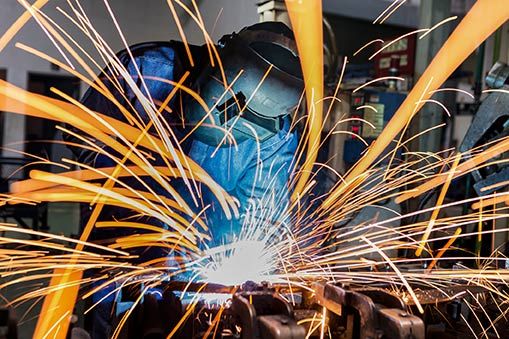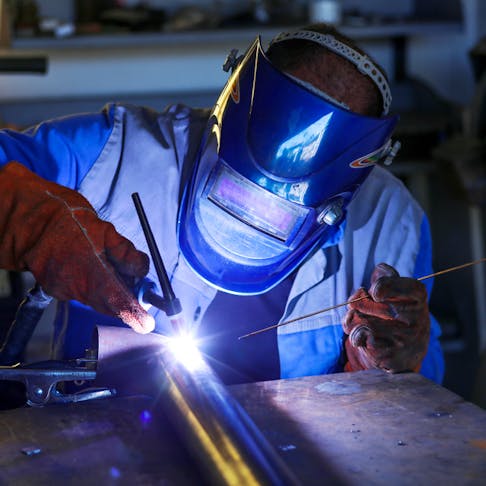Typical Welding Fixing Issues and Exactly How to Address Them Properly
Welding repairs usually run into a variety of problems that can endanger the integrity of the last item. Common issues consist of inadequate infiltration, porosity, and misalignment, amongst others. Each problem offers unique difficulties that need certain strategies for resolution. Comprehending these issues is vital for welders intending to boost their outcomes and skills. This discussion will discover these usual welding repair service problems and efficient approaches to address them.
Insufficient Penetration
Poor penetration occurs when the weld steel fails to completely fuse with the base product, causing weak joints and possible structural failings. This problem often stems from not enough warmth input, inaccurate electrode angle, or inappropriate welding speed. Welders might run into insufficient infiltration due to a mistake of the necessary specifications for a specific material thickness or kind. Additionally, contamination on the base material's surface area can hinder effective bonding, aggravating the issue. To address poor infiltration, welders should guarantee appropriate settings on their equipment and maintain a clean job surface area. Routine assessment of welds is suggested to identify any kind of shortages early, permitting timely modifications and the avoidance of jeopardized architectural honesty in bonded settings up.
Porosity
Porosity is an usual defect in welded joints that shows up as small gas bubbles trapped within the weld metal. This problem can jeopardize the stability of the weld, bring about minimized strength and prospective failing under tension. Montana Mobile Welding and Repair Belgrade Welding. Porosity normally emerges from contamination, wetness, or improper welding techniques, which permit gases to leave into the liquified weld pool. To attend to porosity, welders should guarantee appropriate surface area prep work, maintain a tidy functioning atmosphere, and make use of ideal welding criteria. Additionally, picking the ideal filler product and protecting gas can reduce gas entrapment. Regular examination and testing of welds can aid determine porosity early, guaranteeing timely rehabilitative activities are taken, thus protecting the top quality and dependability of the welded structure
Misalignment
Imbalance in welding can occur from different aspects, including incorrect arrangement and thermal expansion. Understanding the origin is necessary for efficient resolution. Several adjustment methods are readily available to realign components and guarantee architectural integrity.
Sources of Misalignment
Welding imbalance usually comes from a range of underlying problems that can compromise structural stability. One key reason is improper fit-up of components before welding, which can lead to voids and irregular surface areas. Variants in thermal expansion throughout the welding procedure can also lead to distortion, particularly if the materials being joined have various coefficients of growth. Additionally, insufficient clamping and fixturing might fail to hold parts securely in place, causing movement throughout welding. Poorly kept equipment, including welding devices and tools, might present incongruities in the weld bead, more adding to imbalance. Operator error, stemming from not enough training or experience, can likewise play a significant function in creating misaligned welds.

Correction Techniques Available
Addressing imbalance effectively needs a combination of corrective strategies tailored to the specific issues at hand. One common technique is the use of fixtures or jigs to hold parts in the right placement throughout welding, making certain constant placement. In addition, preheating the products can help in reducing distortion and improve fit-up. For considerable misalignment, mechanical realignment methods, such as using hydraulic jacks or clamps, can be employed to remedy the placement prior to welding. Post-weld warm treatment may also be essential to alleviate tensions caused by misalignment. Careful assessment and change during the setup stage can protect against imbalance problems from becoming significant issues, promoting a smoother welding process and improving total structural integrity.
Distortion
Distortion is a common obstacle in welding that can arise from different aspects, consisting of unequal heating and air conditioning. Comprehending the reasons for distortion is necessary for executing effective prevention techniques. Addressing this issue not only boosts architectural honesty yet likewise boosts the general high quality of the weld.
Reasons of Distortion
When subjected to the extreme warmth of welding, products usually undertake changes that can cause distortion. This phenomenon mostly arises from thermal development and contraction during the welding process. As the weld area warms up, the material expands; upon cooling, it acquires, which can create internal anxieties. On top of that, irregular home heating across a work surface can worsen these stress and anxieties, resulting in bending or flexing. The kind of product likewise plays a significant role; metals with varying thermal conductivity and coefficients of expansion may react in different ways, bring about unpredictable distortions. Bad joint design and insufficient fixturing can contribute to misalignment throughout welding, boosting the probability of distortion. Comprehending these reasons is crucial for reliable welding repair and avoidance approaches.
Avoidance Techniques
Reliable avoidance methods for distortion throughout welding focus on regulating warmth input and making certain appropriate joint layout. Maintaining a constant heat input helps to reduce thermal growth and contraction, which can cause distortion. Utilizing techniques such as pre-heating the workpiece can also decrease the temperature slope, promoting consistent heating. Furthermore, picking appropriate joint designs, such as T-joints or lap joints, can boost security and lower stress and anxiety concentrations. Carrying out correct fixturing to safeguard the work surfaces in position further aids in keeping straight from the source positioning throughout the welding process. Finally, staggered welding series can distribute heat much more evenly, avoiding localized distortion. By using these approaches, welders can considerably decrease the chance of distortion and boost the overall quality of their welds.
Cracking
Fracturing is an usual issue run into in welding repairs, often arising from different factors such as inappropriate cooling prices, product option, or poor joint prep work. The event of fractures can significantly compromise the integrity of the weld, causing prospective failures during operation. To resolve this problem, welders should first analyze the source, making certain that products work and appropriately selected for the specific application. In addition, regulating the cooling price during the welding process is essential; rapid cooling can induce tension and result in fracturing. Proper joint layout and prep work likewise add to minimizing the danger. Implementing these methods can enhance weld top quality and sturdiness, inevitably lowering the possibility of cracking in completed weldments.

Insufficient Blend
A substantial concern in welding repair services is incomplete combination, which happens when the weld steel does not effectively bond with the base material or previous weld passes - Montana Mobile Welding and Repair Belgrade. This flaw can result in weak points in the joint, possibly compromising the integrity of the welded framework. Aspects adding to insufficient combination consist of insufficient warmth input, inappropriate welding strategy, and contamination of the surface areas being joined. To address this problem efficiently, welders should ensure appropriate pre-weld cleaning and surface area prep work, in addition to change their welding specifications to achieve sufficient penetration and blend. Routine examination throughout the welding procedure can likewise aid determine incomplete blend early, allowing for prompt restorative procedures to enhance the general quality of the weld
Overheating
While welding repair services can boost structural integrity, overheating offers More Info a considerable obstacle that can result in product deterioration. Extreme warm throughout welding can alter the mechanical properties of metals, causing lowered strength, enhanced brittleness, and bending. This phenomenon is specifically essential in high-stress applications where architectural integrity is critical. Recognizing overheating can include aesthetic assessments for discoloration or distortion, in addition to checking temperature level during the welding process. To mitigate the dangers related to getting too hot, welders must utilize ideal methods, such as controlling warm input, readjusting travel speed, and utilizing appropriate filler products. Additionally, carrying out pre- and post-weld warm therapies can aid restore material residential or commercial properties and boost the total high quality of the repair service, guaranteeing long-lasting efficiency and safety and security.
Regularly Asked Inquiries
What Are the Typical Signs of a Welding Problem?

Exactly How Can I Evaluate My Welds for Quality?
To evaluate welds for high quality, one can utilize aesthetic assessments, ultrasonic screening, and radiographic techniques. Each method guarantees structural honesty, determines issues, and confirms adherence to specified requirements, inevitably enhancing the reliability of the bonded joints.
What Safety and security Precautions Should I Take While Welding?
When welding, one must focus on security by using proper personal safety equipment, making sure appropriate air flow, securing flammable products away, keeping a tidy work area, and recognizing surroundings to avoid accidents and injuries.
Can I Fix a Weld Without Redoing the Entire Joint?
Fixing a weld without redoing this the whole joint is possible, depending upon the damages (Montana Mobile Welding and Repair). Methods such as grinding, including filler material, or making use of a welding procedure can properly deal with specific problems while preserving the surrounding framework
What Tools Are Crucial for Effective Welding Repairs?
Necessary devices for efficient welding fixings include a welding machine, cord brush, mill, safety equipment, clamps, and filler materials. Each device plays a vital role in making certain quality and safety and security during the repair service process. Porosity normally emerges from contamination, dampness, or improper welding techniques, which permit gases to leave into the molten weld swimming pool. Poorly maintained equipment, consisting of welding devices and devices, may introduce inconsistencies in the weld bead, further adding to misalignment. When subjected to the extreme warmth of welding, products commonly undertake adjustments that can lead to distortion. Fracturing is a typical concern come across in welding repairs, usually resulting from numerous factors such as improper cooling rates, product choice, or insufficient joint prep work. A significant problem in welding repair work is insufficient fusion, which happens when the weld metal does not adequately bond with the base product or previous weld passes.